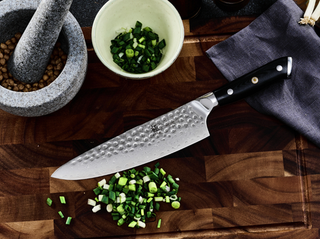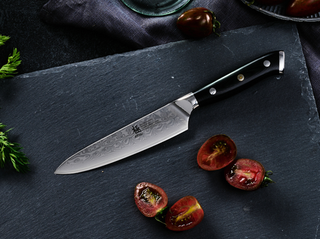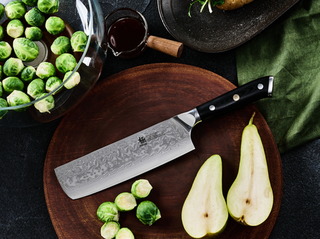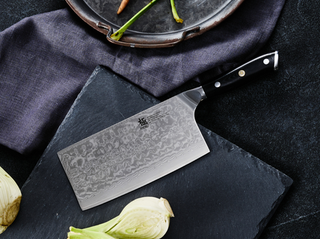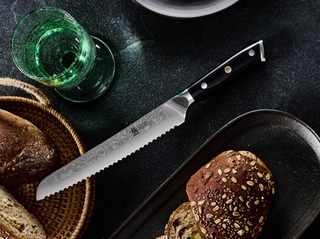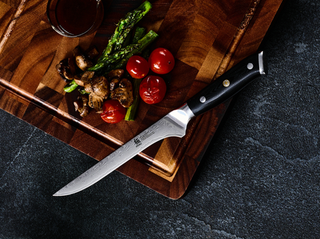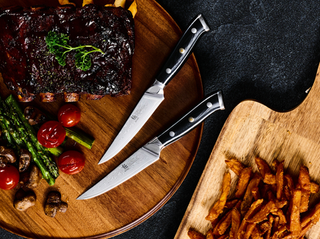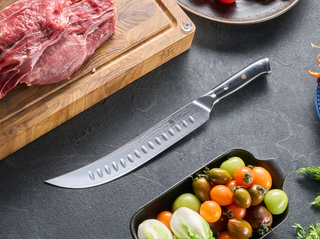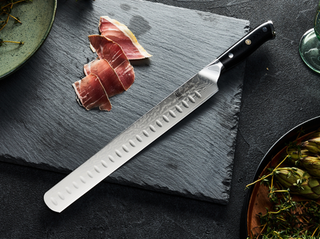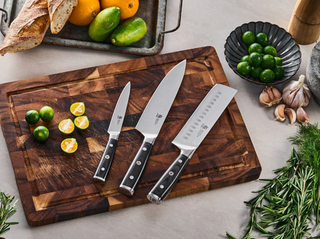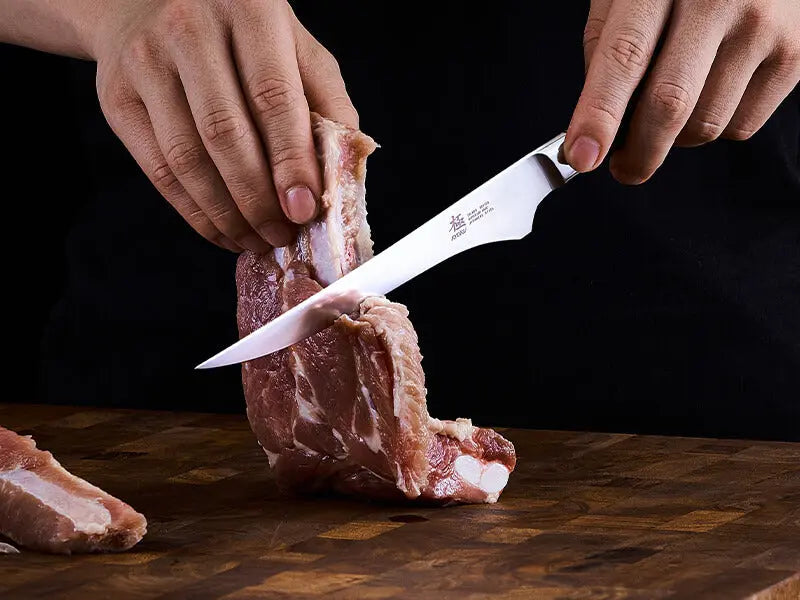A boning knife is a specialized kitchen knife used for removing bones from meat, poultry, and fish. But some people are not very familiar with boning knives.
In this blog, we'll unravel the mysteries surrounding boning knives, revealing their purpose, versatility, and why they're a game-changer in the kitchen. Discover the diverse range of boning knives available and learn how to choose a boning knife to suit your needs effortlessly.

What does a boning knife look like?
A boning knife typically has a narrow and pointed blade, specifically designed for the task of removing bones from meat, poultry, and fish. Here are some common characteristics of a boning knife:
- Blade Shape
The blade of a boning knife is typically long and thin, with a pointed tip. It is designed to provide precision and control when maneuvering around bones and joints.
- Blade Length
Boning knives can vary in blade length, but they generally range from 5 to 7 inches (12.7 to 17.8 cm). Shorter blades are suitable for small cuts and intricate work, while longer blades provide more flexibility and reach.
- Blade Flexibility
Boning knives often have a flexible blade, allowing for better maneuverability around bones and the contours of the meat. A flexible blade can bend and follow the shape of the bone, making it easier to separate the meat from the bone.
- Handle Design
The handle of a boning knife is typically ergonomic and designed for a comfortable grip. It may feature materials like wood, plastic, or rubber to provide a secure hold, even when hands are wet or slippery.
- Construction
Boning knives are commonly made with high-carbon stainless steel. This type of steel offers a good balance of sharpness, durability, and corrosion resistance. Some boning knives may have a full-tang construction, where the blade extends into the handle for added strength and stability.
What is a boning knife used for?
A boning knife is a specialized kitchen tool used for removing bones from meat, poultry, and fish with precision and minimal waste. Its narrow, pointed blade allows for controlled cuts around bones and joints, making it ideal for deboning, trimming, and shaping meat. Whether you're a professional chef or a home cook, a boning knife is essential for achieving clean, professional cuts and maximizing the yield of meat products. With its sharpness and maneuverability, this versatile knife is a must-have for anyone looking to master the art of meat preparation.
Is a boning knife the same as a fillet knife?
While both boning knives and fillet knives are used for working with meat and fish, they have distinct differences in their design and intended purposes.
- Boning Knife:
A boning knife is primarily designed for removing bones from meat, poultry, and fish. It typically has a narrow, pointed blade that allows for precise cuts and maneuverability around bones and joints. Boning knives come in different lengths and flexibilities to accommodate various types of meat and cutting techniques. They are versatile tools for deboning, trimming, and shaping meat, ensuring minimal waste and clean cuts.
- Fillet Knife:
A fillet knife, on the other hand, is specifically designed for filleting fish. It features a long, thin, and flexible blade that allows for precise, delicate cuts along the fish's bone structure. The flexibility of the blade enables it to glide smoothly along the contours of the fish, removing the skin and bones while preserving the maximum amount of meat. Fillet knives are typically thinner and more flexible than boning knives, allowing for intricate filleting tasks.
While there may be some overlap in their uses, boning knives and fillet knives excel in different aspects of meat and fish preparation. Boning knives are more versatile and suited for tasks beyond filleting fish, while fillet knives are specialized tools specifically tailored for fish filleting.
how to choose a boning knife
When choosing a boning knife, there are several factors to consider to ensure you find the right one for your needs. Here are some key considerations:
|
Factors to Consider |
Description |
|
Blade Type and Flexibility |
Decide between stiff or flexible blades based on the type of meat and tasks you'll be performing. |
|
Blade Length |
Choose a shorter blade (4-6 inches) for precision work or a longer blade (6-8 inches) for larger cuts. |
|
Handle Comfort and Grip |
Look for an ergonomic handle that provides a comfortable grip, considering the material and its grip when handling wet or greasy ingredients. |
|
Blade Material |
Opt for high-carbon stainless steel for a balance of sharpness, durability, and corrosion resistance. |
|
Tang Construction |
Decide between full tang (better balance and durability) or partial tang construction for the knife. |
FAQs about boning knife
What types of meat can you use a boning knife on?
A boning knife works well on various meats, like beef, pork, lamb, chicken, turkey, and small game. It can remove bones cleanly and separate joints.
What's the best way to clean a boning knife?
Rinse well under hot water, keeping the blade pointed away from you. For sanitation, wash with hot, soapy water, then rinse and immediately hand dry the knife. Don't let moisture linger. Oil the blade occasionally.

How should you store a boning knife?
Store cleaned boning knives in a designated knife block, sheath, or drawer organizer to keep the sharp blade protected and avoid damaging the tip. Never toss loose items in a utensil drawer.
